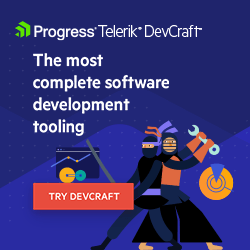Vibe Coding: Buy Now, Pay Later—The Fast Track to Product Debt

AI-powered vibe coding helps you build fast—but at what cost? Learn to manage technical, design and product debt before it stalls progress.
There’s a new buzz in town: vibe coding.
With the rise of AI, significant shifts are happening in software development. Developers and non-developers are creating software almost as quickly as they can imagine it.
But something significant is happening here. Previously, rapid development was used mainly for prototypes. Now, we’re seeing production-level code generated without thorough planning or consideration.
This introduces a substantial risk. Not a new one, but one we’ve struggled with for ages: debt.
Technical Debt
Engineers have talked about technical debt for years. The urgency and impact of this debt have finally reached the boardroom.
Yet one major challenge remains: getting technical debt prioritized in the backlog.
Product managers don’t like paying interest. They rarely choose to prioritize budget or sprint time on maintenance. Tasks like code cleanup, backend refactoring or infrastructure upgrades don’t make the cut.
These efforts don’t produce new features or deliver changes users can see. But they are vital. They keep your product healthy and sustainable.
Some companies manage technical debt well. Their teams address it regularly and maintain technical integrity.
But more often, teams face pressure to chase what’s “sexy” and sellable.
Here’s the truth:
- Users never ask for a backend upgrade.
- Users don’t request a code refactor.
- Users don’t care about your tech stack.
When you let user feedback, market demands and surface-level wants drive your backlog, you skew your product roadmap. You prioritize what’s visible and exciting, while postponing groundwork.
That approach is risky. Those flashy features might boost short-term sales, but ignoring maintenance means you’re quietly building up debt. If you don’t pay the interest—if you don’t reduce technical debt—the problem compounds. Eventually, the bill comes due. And when it does, it kills progress.
Progress matters. It’s what users, investors and stakeholders expect. They want to see momentum, adaptability and growth.
Even the best products need to evolve. But when you spend all your capital—your time, money and energy—on servicing old debt, you leave no space for innovation.
You stop growing. You slow down.
Design Debt
While technical debt is well-established, there’s another type often overlooked: design debt.
It’s similar to technical debt. Rapid decisions today accrue interest you’ll have to pay later. Design debt includes the decisions you make—or avoid—that inevitably lead to future rework.
Often, these quick choices negatively impact the user experience, creating a need for enhancements or new features just to repair the damage. You might also pay for it through lost users, as accumulated poor decisions degrade the overall experience.
Today’s decisions have lasting impacts. While you can’t change the past, it’s crucial to manage the debt you’re accumulating.
Design debt directly affects user experience, usability and future design choices. Rework is always a major part of addressing this debt.
Product Debt
But we don’t have time to fight over which debt is more important. We need to move away from siloed thinking. Instead, we should integrate technical and design debt into a unified approach: product debt.
Product debt correlates with product quality—when quality drops, maintenance rises and cost goes up.
Effective debt management becomes critical as product debt accumulates, because eventually you’ll have to settle your debts.
This becomes even more important with vibe coding.
It’s easy to get addicted to the dopamine hit of instantly creating whatever you imagine. But are you genuinely considering the debt you’re incurring? Are you planning responsibly, managing wisely and deciding carefully?
Build Now, Pay Later
So the fundamental question remains: how will you handle the resulting debt?
The old approach to product debt was more like using a credit card—there was awareness. You saw the balance, got a bill and felt the consequences. Managed responsibly, debt didn’t have to derail progress.
Vibe coding feels more like a “buy now, pay later” model. It removes the friction. You can build instantly. No upfront cost, no immediate consequence. But that convenience creates a dangerous disconnect. You delay the pain while the debt quietly adds up.
Vibe coding—and using AI—carries the same risk.
As the saying goes, “With great power comes great responsibility.” We must ask ourselves if we’re using these powerful tools wisely.
Credit cards—even “buy now, pay later” schemes—can effectively streamline purchases and safeguard cash flow when used responsibly. Yet, if no one assumes responsibility, we simply accumulate debts that someone inevitably must pay.
Do you check your debt regularly, pay your bills and adjust your spending?
Good product debt management will help you win the long game and build a product that will stand the test of time.
This isn’t about criticizing AI or rapid coding—it’s about vibing responsibly.

Teon Beijl
Teon Beijl is a business designer and founder of Gears & Ratio, with over a decade of experience in enterprise software for the oil and gas industry. Formerly Global Design Lead for reservoir modeling, remote operations and optimization software at Baker Hughes, he now helps organizations deliver high-quality user experiences for industrial products through knowledge sharing, design leadership and implementing scalable design systems. Connect with Teon on LinkedIn or Substack.

